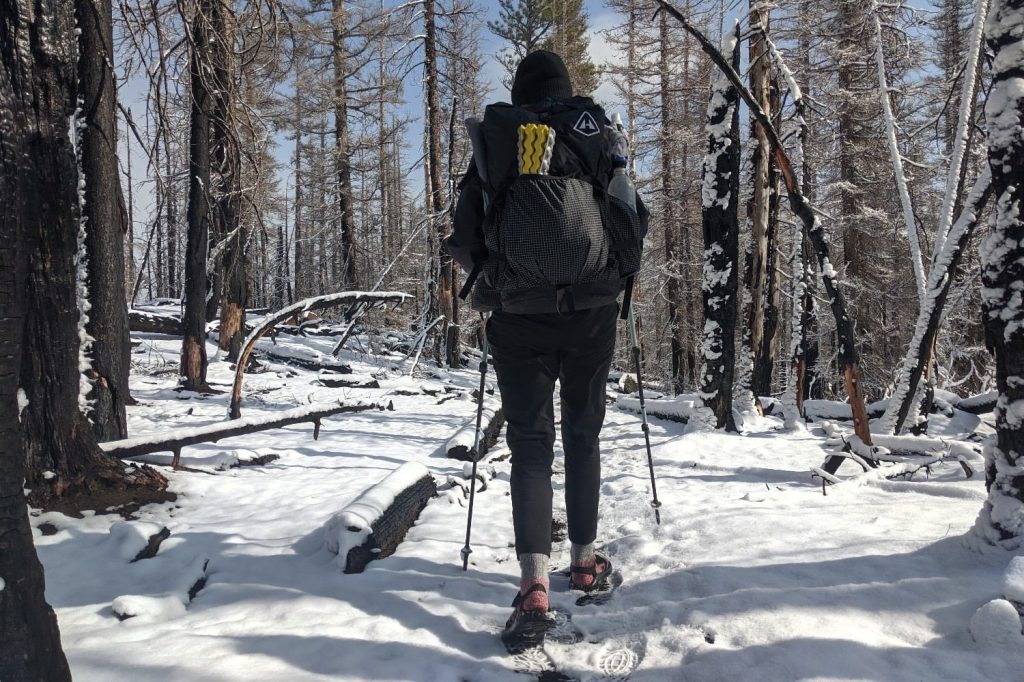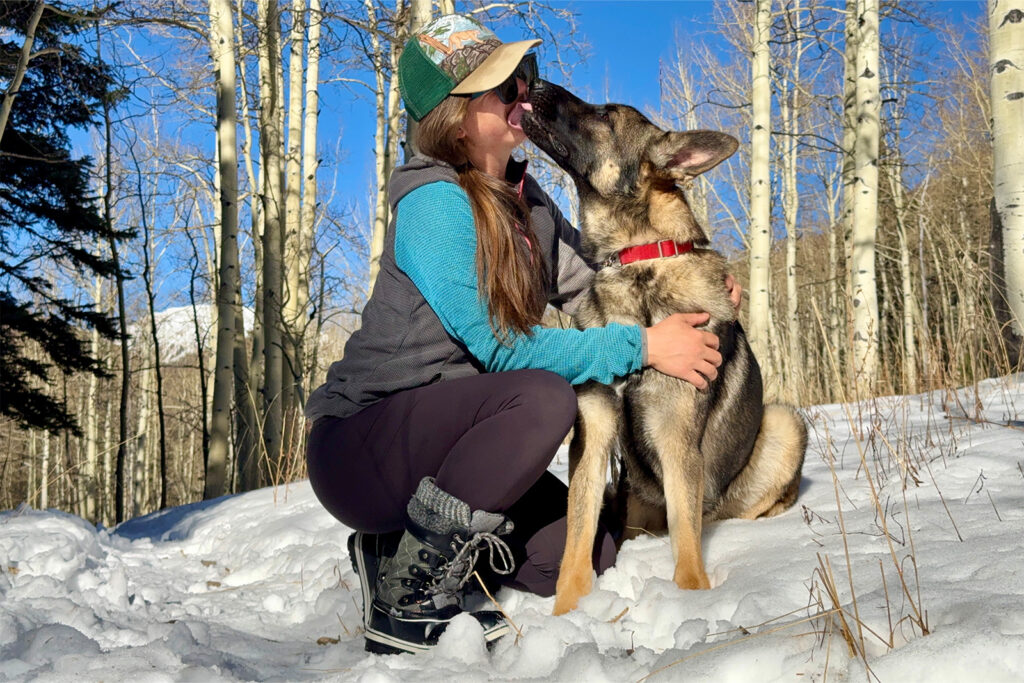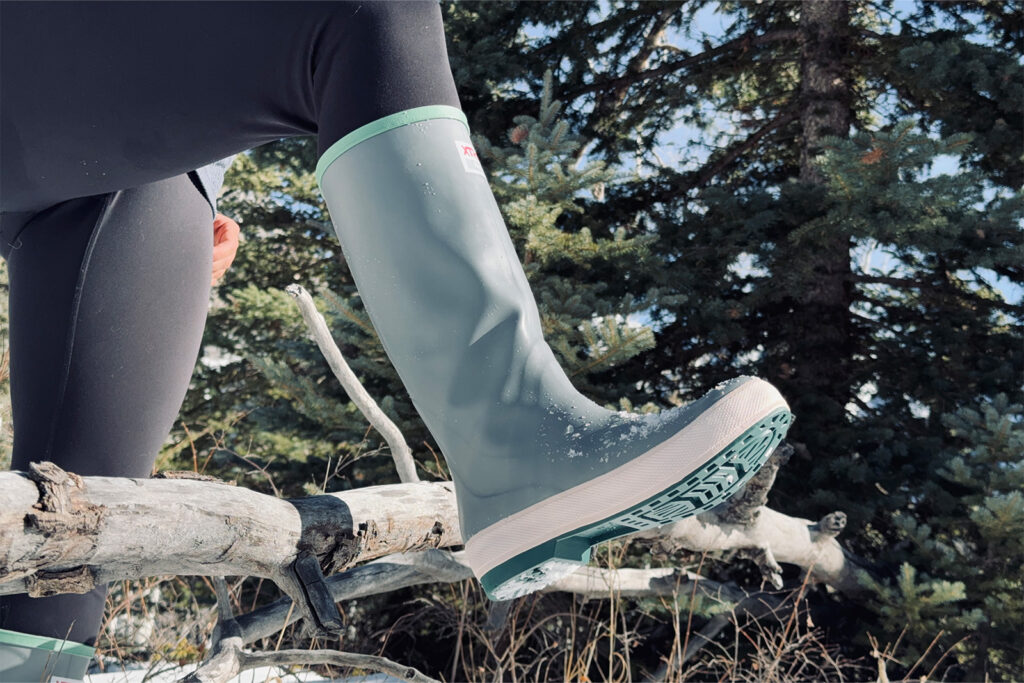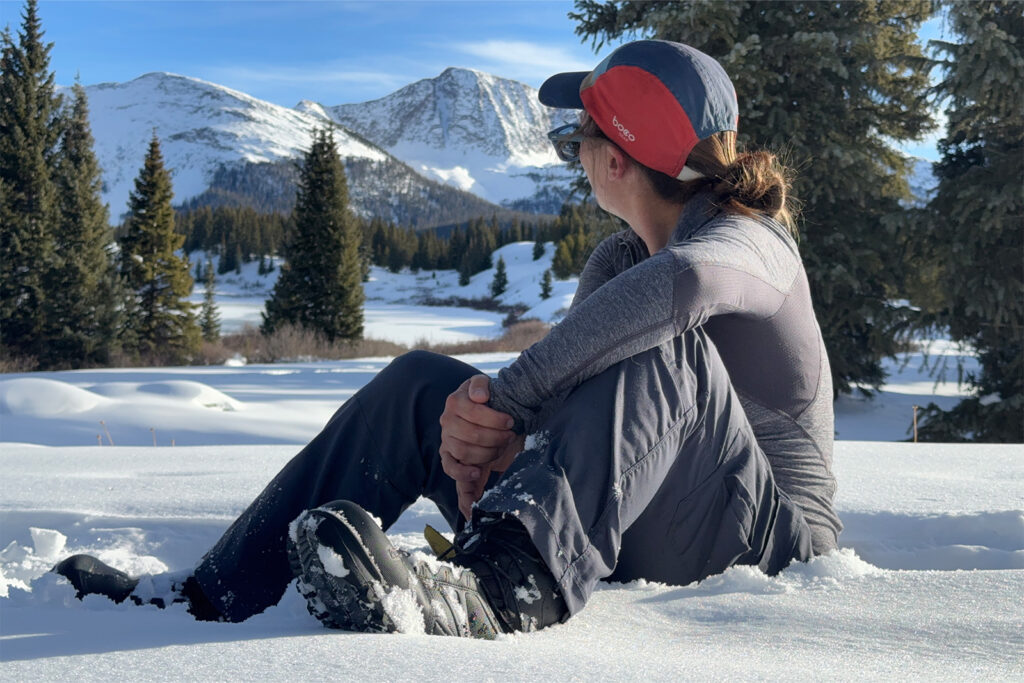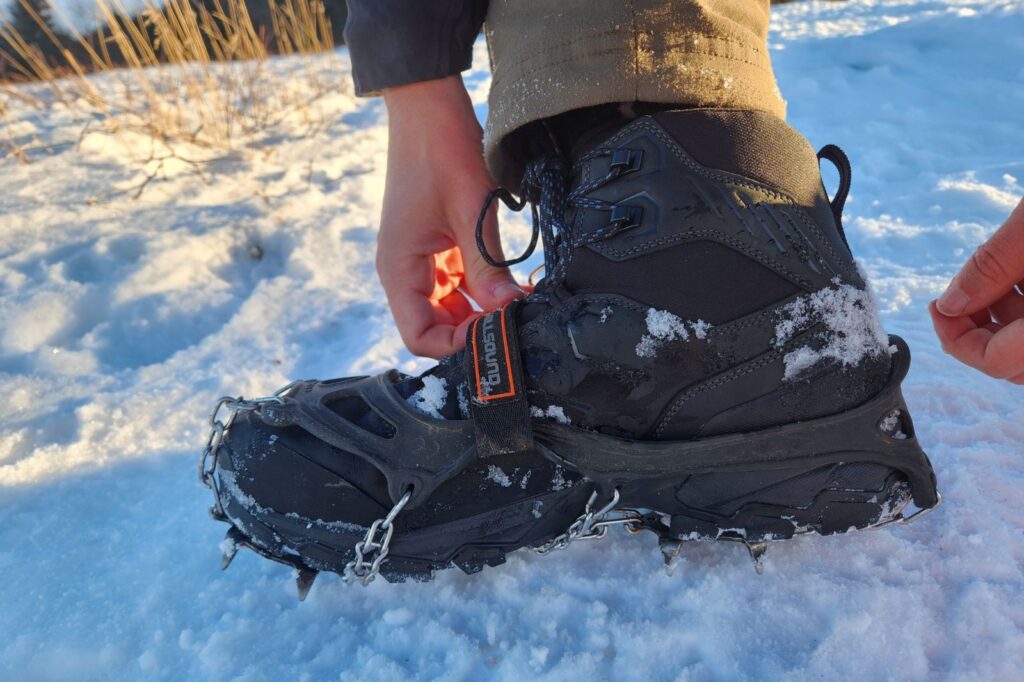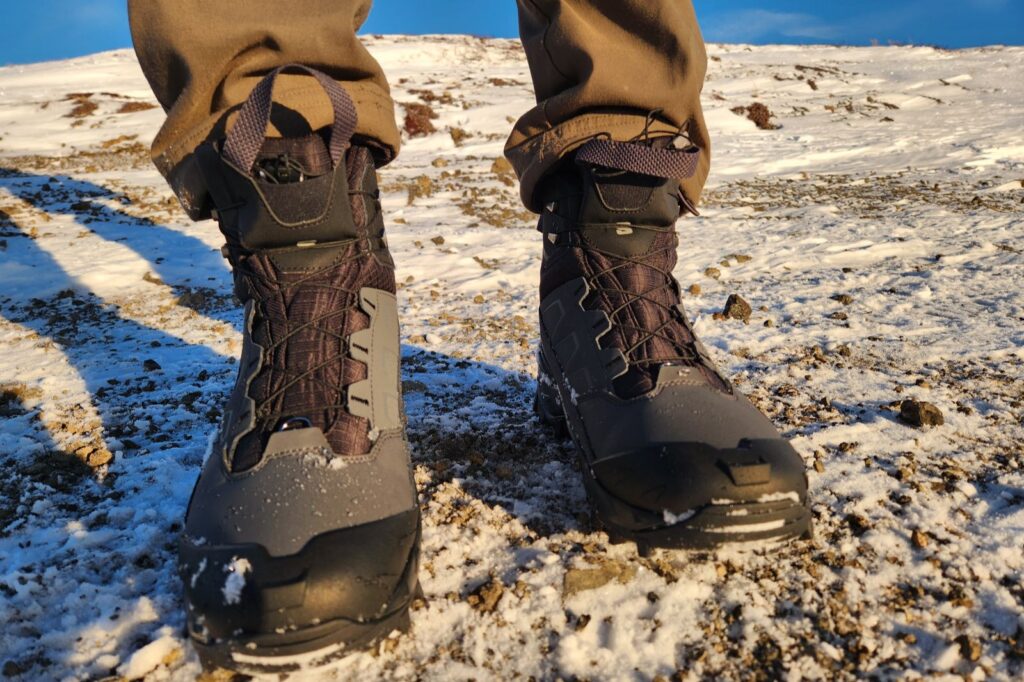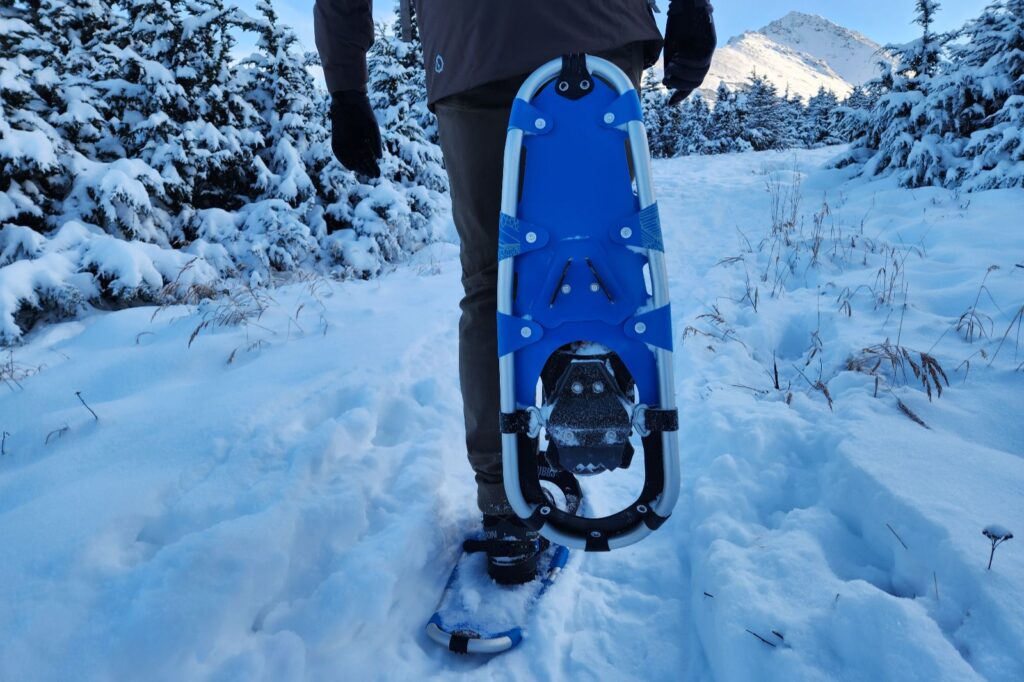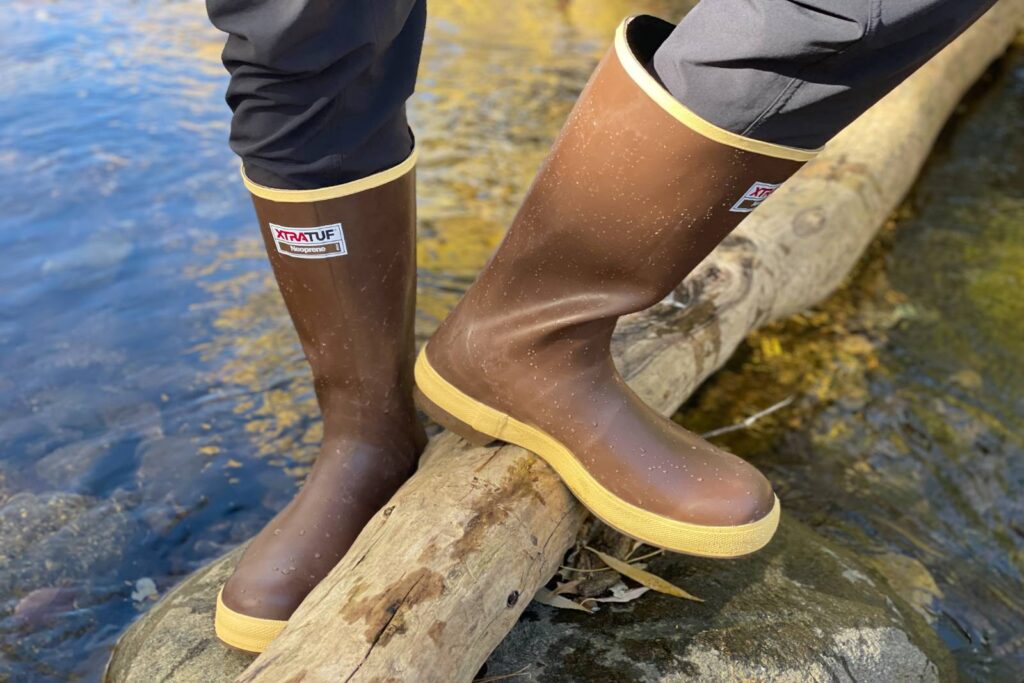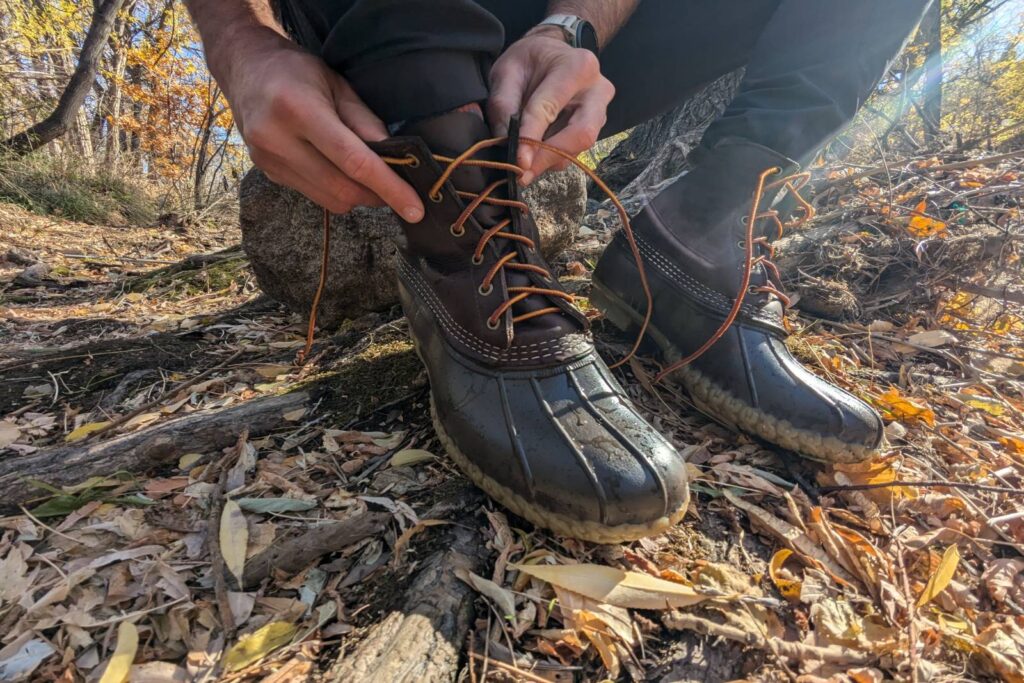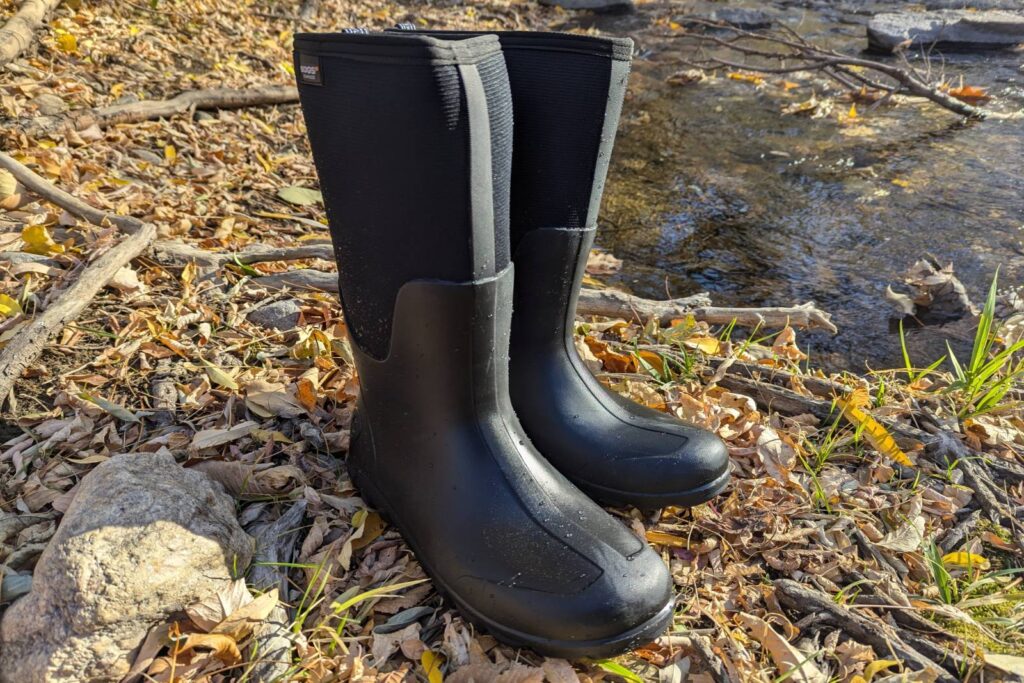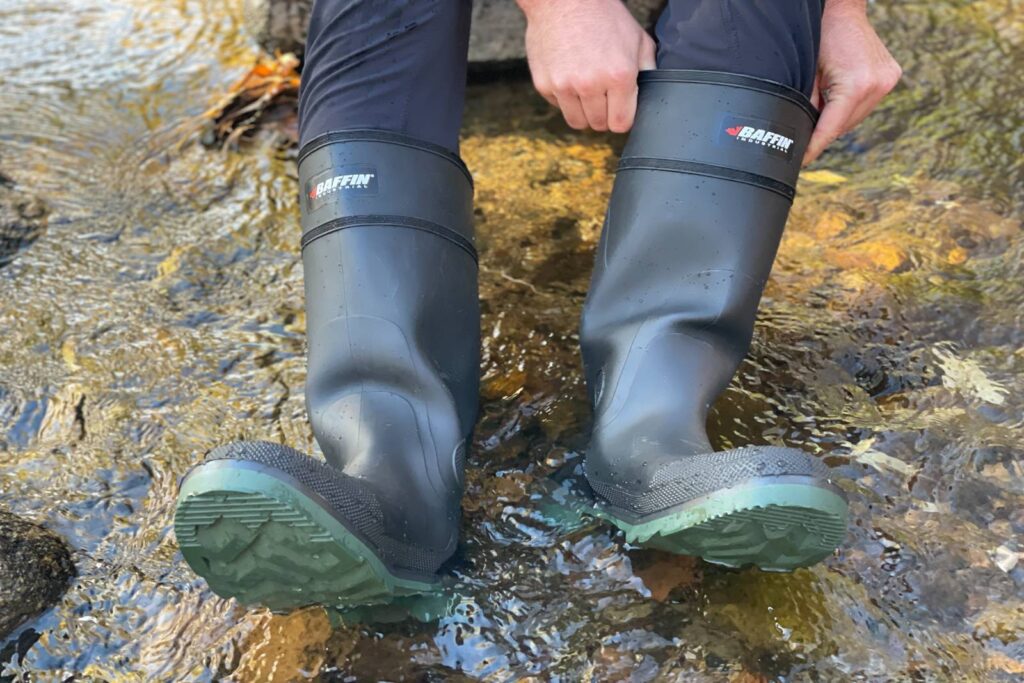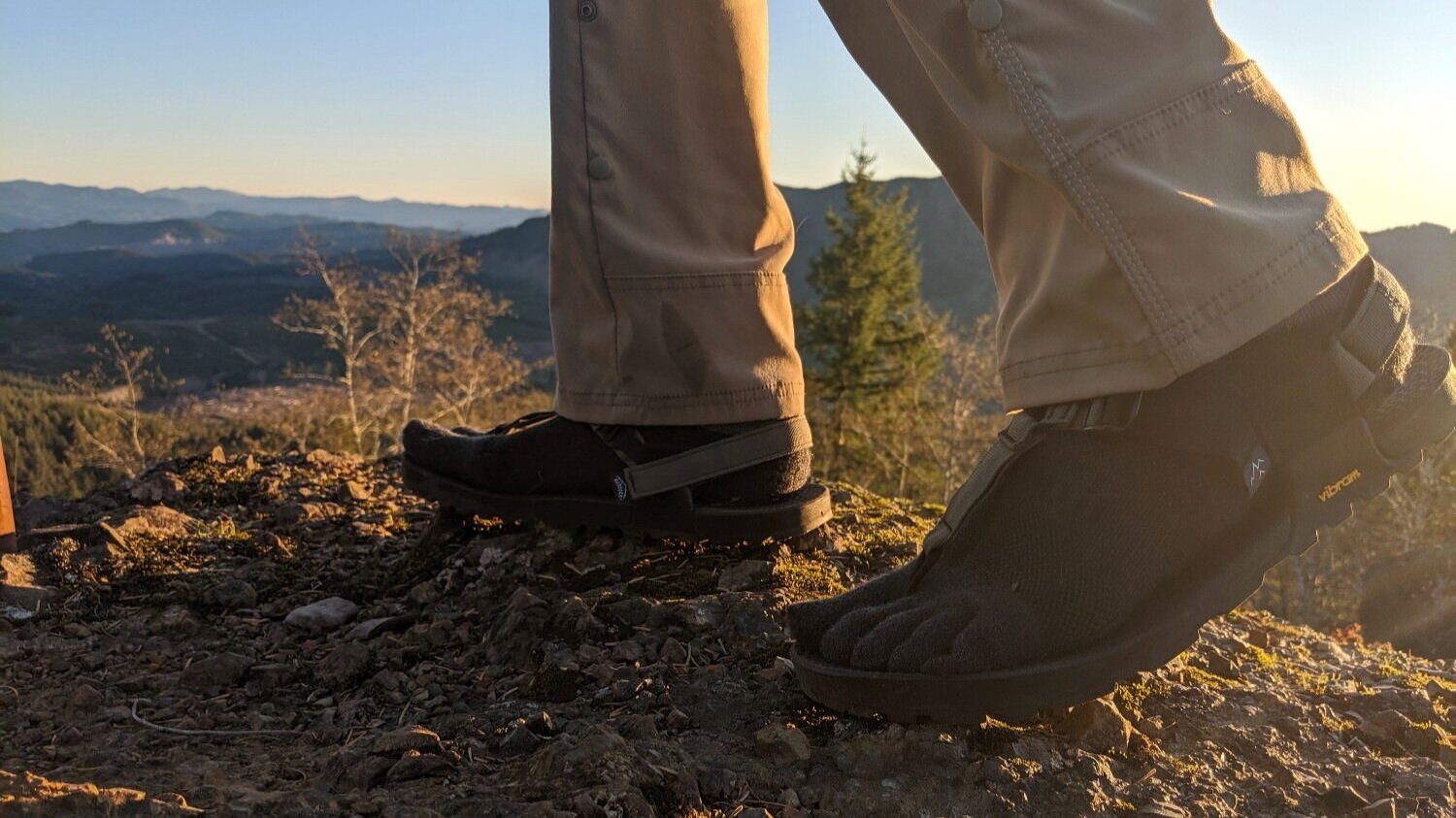
Lightweight hiking shoes are rapidly replacing hiking boots as the footwear of choice on trail. And now there’s a new trend gaining traction that might surprise you – hiking sandals. Before you scoff, we are not talking flip-flops or Crocs. There are a wide variety of technical sandals with lugged soles, arch support, and all the things that make a trail-worthy piece of footwear. If you’re still skeptical, we’ve thru-hiked all 2,190 miles of the Appalachian Trail in Chaco sandals (and love them!).
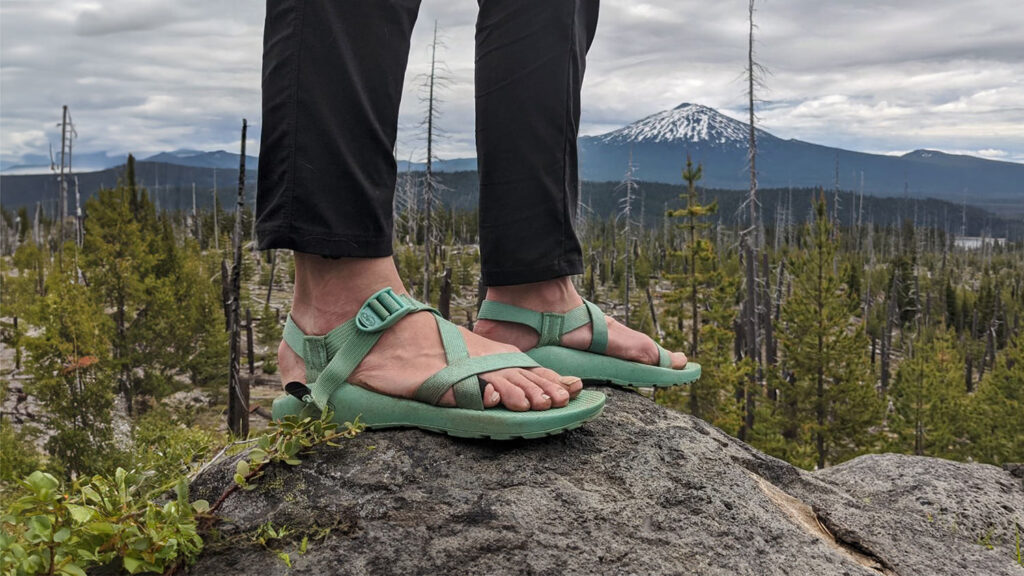
Why Hiking in Sandals is Great
No more blisters
Boots and trail runners keep your feet cooped up in shoes and socks all day. No matter how breathable your closed-toe footwear claims to be, you aren’t going to escape sweat. Wet feet plus friction equals blisters, and blisters equal a miserable hike.
With sandals, your feet can breathe and benefit from sun and breeze to keep them dry. Even though hotspots can still occur where straps rub on your feet, it’s much easier to take preventative measures in sandals. Adjusting where the straps sit on your foot can provide relief, and we always carry some athletic tape to use as a barrier between hotspots and straps to prevent blisters.
LightWeight
The more weight you carry, the more energy you expend carrying it. That part is simple. But weight carried on your feet is actually much more significant. Because your feet are further away from your center of mass than, say, your backpack, it requires more effort to move that weight than an equivalent amount closer to your body (imagine the difference between hugging a watermelon tight versus holding it in your hands with your arms straight out in front of you). For this reason, footwear weight zaps 4-6 times more energy than the equivalent ounces on your back. So, swapping a 3-pound pair of boots for a 1-pound pair of sandals will be the energy saving equivalent of removing 8-12 pounds from your pack. No joke.
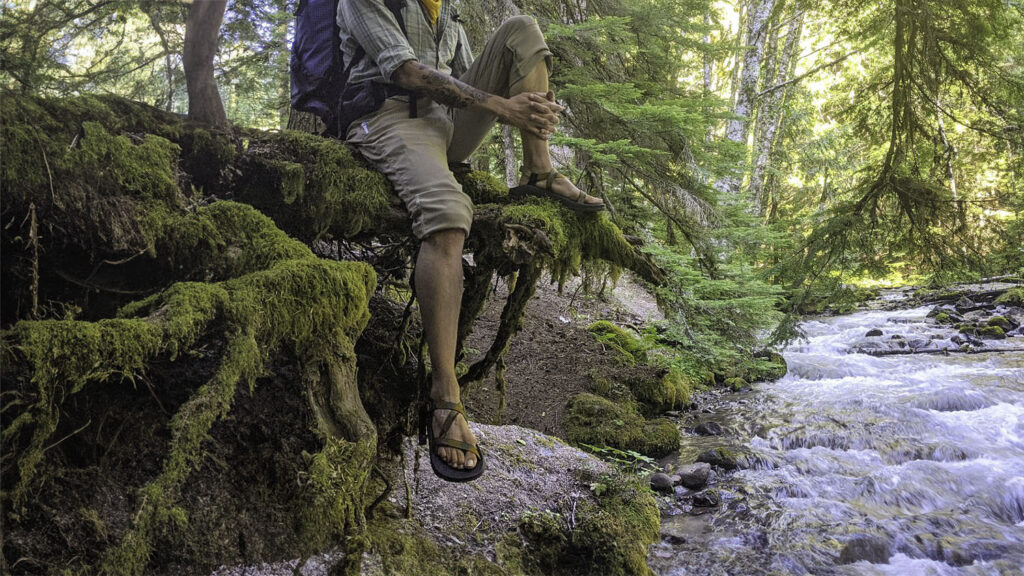
Water crossings simplified
No more removing shoes and socks before crossing a river. No more lashing them to your pack and then sitting on the other side to dry your feet and put your shoes and socks back on. With sandals, you can trudge right across any body of water and come out on the other side feeling refreshed!
The ability to dunk our tootsies into cold streams is one of our favorite things about hiking in sandals. We recommend having a small pack towel handy to blot excess water off your feet on the other side to prevent hot spots from forming, but the sun and outside air will generally dry out your feet quickly.
It’s easier to remove little pebbles and debris caught in your shoe
If you’ve ever hiked with a pebble in your shoe and just pretended it wasn’t there, sandals could be for you. Rather than trudging on stubbornly hoping the rock apparates on its own, a well-executed shake of the foot or the properly placed finger between the toes is all you need to actually dislodge the pesky little pebble and move on with your day.
But won’t I get more pebbles stuck under my foot if I’m wearing sandals? The short answer is yes. However, most pebbles will come out on their own when you move or you can shake your foot as you step to get rid of them. Hey, hiking gear is all about tradeoffs, and this one is worth it to us.
Sweet tan lines
Alright, so a great tan isn’t going to help you hike up a mountain, but it is a pretty fun bonus. Just remember, it’s more exposed skin so do be sure to protect your tootsies accordingly.
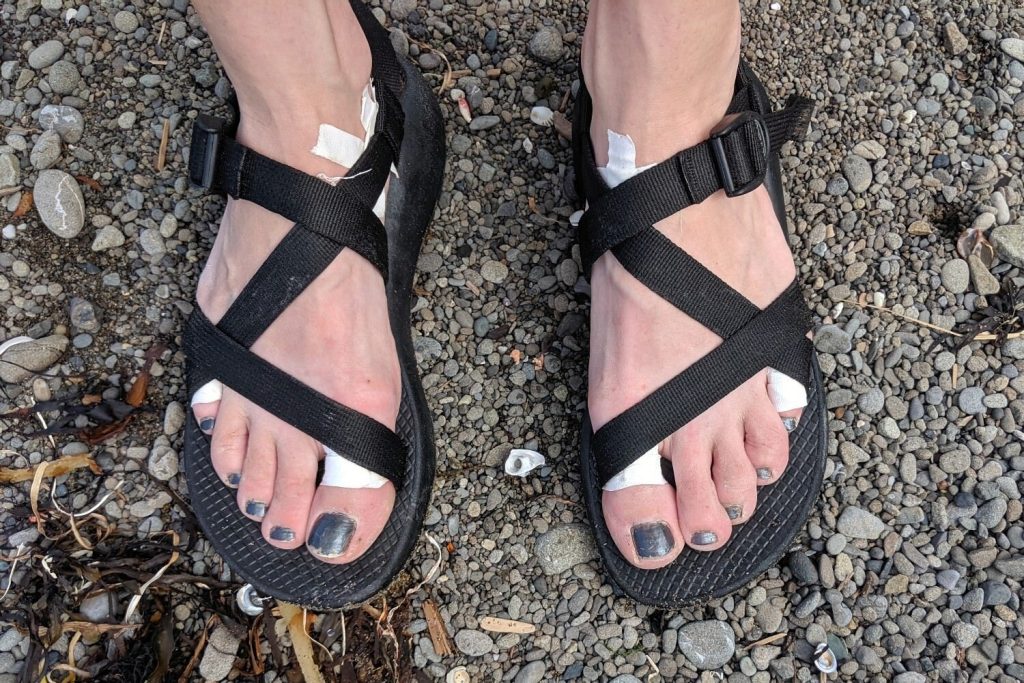
Why Hiking in Sandals Isn’t Great
Sandal straps can be abrasive
We mentioned earlier that blisters are much less likely with sandals, but there is a caveat. If your hike is in a really wet or sandy area – or a really wet and sandy area – sandal straps can cause real discomfort from friction and abrasion. We recommend blotting your feet dry with a small pack towel after water crossings and always keeping a roll of athletic tape handy to doctor up any hotspots that develop to prevent them from turning into blisters.
Exposed tootsies
The ability to let your toes wiggle unencumbered is great. However, it does leave your little piggies exposed to all sorts of potential dangers. Sun, loose rocks, thorns, poison ivy, the cold, and snakes are just a few of the potential hazards you leave yourself open to when hiking in sandals. You can reduce the risk from most of these perils with a few precautions.
Sun
Make sure you carry a good SPF sunscreen and apply it every few hours to keep the tops of your feet from burning.
Loose rocks
One thing that spikes our blood pressure in the backcountry is inadvertently kicking a loose rock against our ankle bones, the balls of our feet, or our heels. It just hurts. We are hiking sandal evangelists, but even we have to admit, the only way to prevent injuries and mishaps during rock scrambles is by stepping carefully.
The cold
The fear of cold feet is one of the most common concerns we hear about hiking in sandals. This one is easily prevented by committing one of the worst fashion crimes humanly possible: wearing socks with your sandals. For mildly chilly hikes, we like to bring a pair of Darn Tough Hiker Micro Crew Cushion Socks. For winter and short snowfield or glacier crossings, we bring a pair of Darn Tough Mountaineering Socks to keep our tootsies toasty. Toe socks can also be a good choice for hiking sandals depending on your sandal straps. For more awesome sock options, check out our list of the Best Hiking Socks.
Snakes
Snakebites are rare no matter what footwear you have on, but sandals do leave more exposed skin at risk. The most important thing to remember is that snakes don’t want to interact with you, so long as you don’t try to interact with them. Leave them alone and they’ll leave you alone. Do not approach wildlife – give all critters a wide berth on the trail.
For more information on snake safety, check out our Snake and Cougar Safety video.
If a strap fails, you could be really out of luck
When hiking in shoes, you may wear a hole in them or break a lace, and you can typically fashion a temporary solution and carry on until you can resolve the issue for good. With sandals, you need all the straps to stay intact in order for the shoe to function. High-quality hiking sandals use really durable strap materials and are pretty difficult to break, but it can happen. It’s always best to have a length of duct tape with you for field repairs when backpacking.
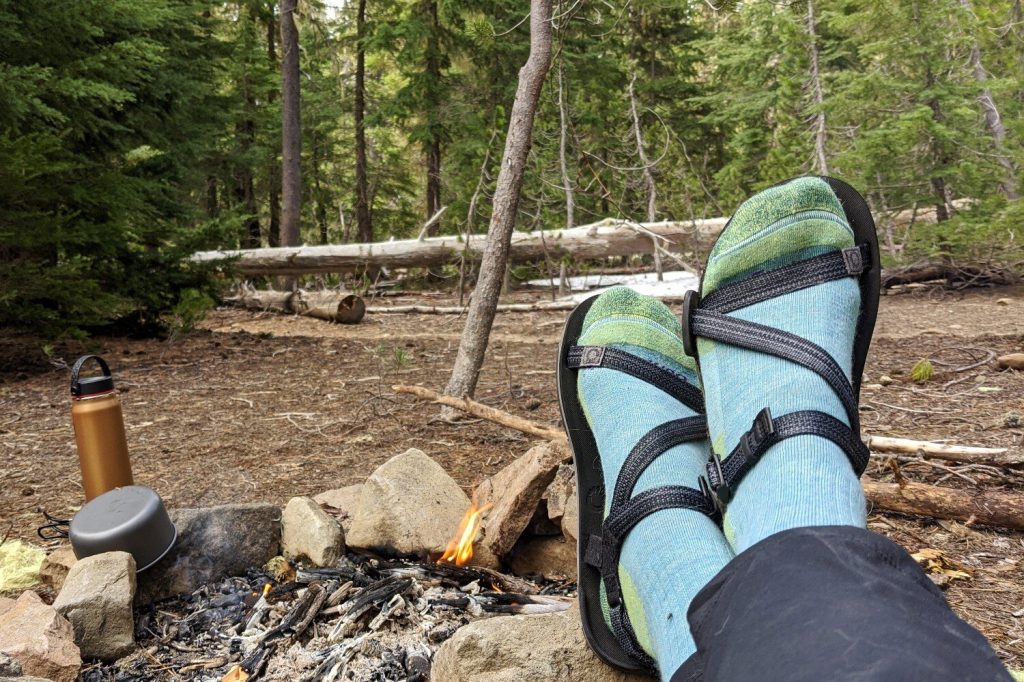
Trailworthy Sandals
Ready to give hiking sandals a try? The number of options is ever-increasing. Here are a few of our favorite hiking sandals:
Chacos
The Chaco Z/1 Classic (men’s / women’s) model is one of our favorites. This pair is sturdy and comfortable with an impressive amount of arch support. If you like a softer sole try the Chaco Z/Cloud (men’s / women’s). For those who are seriously serious about sandals hiking, Chaco offers more aggressive outsole options and custom color patterns through their MyChacos custom sandal builder.
Bedrocks Sandals Cairn EVO 3D Sandals
The Bedrock Cairn 3D Adventure Sandals are a more minimalist trail sandal with a sticky Vibram outsole.
Keen Newport H2
The Keen Newport H2 Sandals (men’s / women’s) feel more like a shoe than a sandal with their closed toes and thick straps that cover most of the foot. Having said that, they’re heavier than the other sandals on this list.
Xero Shoes Z-Trail EV
The Xero Shoes Z-Trail EV Sandals (men’s / women’s) are some of the lightest and most minimalist sandals available. Xero Shoes are designed to let your foot move more naturally, so these will feel similar to walking barefoot.
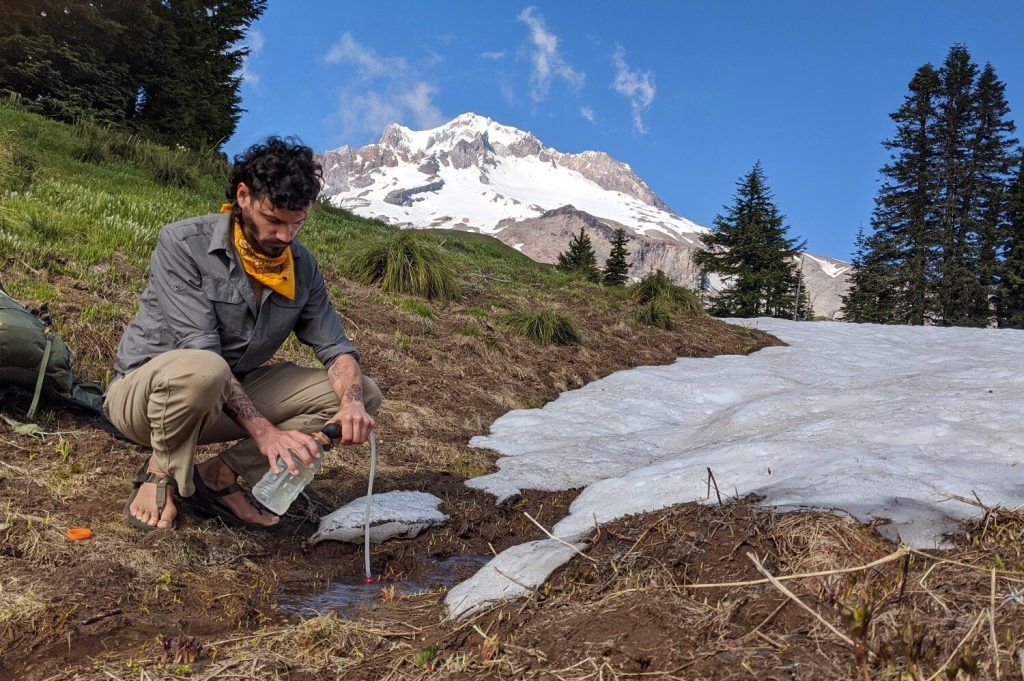
Final Thoughts
Hiking in sandals has a lot of advantages over hiking in more traditional shoes or boots. We love how easy water crossings are when wearing sandals and that we can easily eject pebbles that find their way between our feet and the footbed. You’re also much less likely to get blisters.
If you’re ready to give hiking in sandals a try, here are a few tips to get you started:
Break-in
Remember, many hiking sandals do a have a short break-in period, so it’s a good idea to wear them around town for a couple of days before hitting the trail.
Start small
We recommend starting out with shorter hikes to get used to hiking in sandals – it’s quite different from hiking in shoes.
Avoiding blisters
Bring along a roll of Rock Tape to address any hot spots that form.
Try more than one
If the first pair of sandals you try isn’t exactly right, try a different one! There are so many options out there and they all perform quite differently. REI has a great return policy that allows you to try shoes and then be able to return or exchange them if they don’t work.
